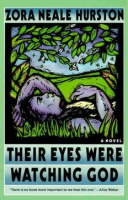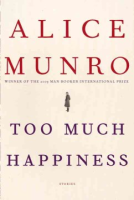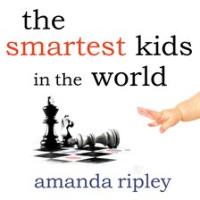Teen Book Reviews: March 2024 Page 4

Their Eyes Were Watching God
Review by India D
Their Eyes Were Watching God by Zora Neale Hurston was published in 1937. For potential readers who try to avoid religious books or books about God, this book is not about religion in the formal sense. The book takes place in Florida in the beginning of the twentieth century. This is also the time of Jim Crow when racial tensions were incredibly high and racism was still just as present as it was before and during The Civil War. Janie Crawford is the main character in the story. It starts and ends with Janie talking to her friend Pheoby on a porch. What is remarkable about this book is the prose in which it was written. It was written in Southern black dialect. This style of writing allows the reader to feel and hear the exact kind of dialogue that Southern black people of this time spoke. This creates a strong connection between the reader, the characters and the plot of the story. Yet because of how it is written, it takes longer to read as the reader in their head has to read the words, hear them in their head pronounced phonetically and then understand them. For readers who have reading challenges, it will likely slow down the pace of reading. Since there is more effort made in translating the dialect and understanding the sentence, it can be tiring for the reader who struggles with reading. This is not to discourage anyone from reading this historic novel but the person with reading challenges should go into reading this book with this expectation of extra time and effort put forth in reading it. Or the reader could also consider listening to an audio version of the book to literally hear the dialogue with their ears rather than in their minds.

Too Much Happiness by Alice Munro
Review by India D
Alice Munro is a Canadian author who won the Nobel Prize in Literature in 2013. The book Too Much Happiness is the winner of the 2009 Man Booker International Prize. Too Much Happiness is a collection of ten short stories. Even though the title of the book has the word “happiness” in it, there is not much happiness or joy found in any of the stories. The stories and the characters in them deal with life’s struggles, death, guilt and flaws. The first short story, Dimensions, is about a young woman named Doree but later changed her name to Fleur. This story starts out mysterious and as the story goes on, the reader learns more about Doree/Fleur and the events in her life that led her to the present day situation. The title of this short story, Dimensions, symbolizes the many different dimensions that one person has and how people can know the different dimensions of another person, as awful as they may be, and still have a relationship with them. Munro is known for digging into the complexities of human behavior and the story Dimensions is such an example. The last short story, Too Much Happiness, is also the name of the book. This story shares the final days in the life of Sophia Kovalevsky. Sophia is a very gifted Russian mathematician and a writer. Sophia wins an important mathematics prize but dies very soon after of pneumonia following a cold and rainy trip she takes to Stockholm. Sophia finds herself in a male-dominated field. She has strong beliefs and values about female equality in life and in academics. This short story explores the injustices that women face when they lead lives that go against the traditional values of their culture and era. In summary, Too Much Happiness is a collection of ten stories by the acclaimed writer, Alice Munro. This book is not uplifting even though its title might hint that it is. Each story tells the tale of suffering, pain or loss. Munro explores the idea of unhappiness throughout each of the stories and leaves the reader asking how happiness fits into each of the complex lives and stories she tells.

Crazy Rich Asians by Kevin Kwan
Review by EB
Nicholas Young is a history professor at NYU. He lives in a humble studio with relatively few possessions, and has been dating a middle-class economics professor named Rachel Chu for two years. This summer, Nick finally decides to introduce his girlfriend to his family in Singapore. Rachel always thought her boyfriend was middle-class, or possibly upper-middle class, just like her. Upon her arrival in Singapore, though, she realizes that this is not the case. In reality, Nicholas Young is the richest bachelor in Singapore! His childhood home is a palace, his mother owns one of the most luxurious condos in Singapore, he and his friends own private jets, his cousin Astrid buys over a dozen couture dresses from Paris every year, and Nick is a member of the most exclusive clubs. Rachel’s arrival drops a bomb onto all the richest families in Singapore, including Nick’s. Rachel struggles to fit in in this crazy rich world of scheming parents and children, all of whom are trying to gain and retain as much wealth as possible. The most important question for Rachel is: will Nick’s family accept her? I loved this book because it was extremely interesting and kept me on the edge of my seat. Even though the book is over 500 pages long, I finished it in a few days. This book was very interesting to me because it allowed me to get a glimpse of Singapore life and society. When you read Crazy Rich Asians, you not only read about Nick and Rachel, but also learn the stories of Nick’s crazy rich friends and family.

The Smartest Kids in the World
Review by Amanda Ripley
You may have heard that Finland and South Korea have some of the best schools in the world. What is it really like, though, to go to school in one of these “education superpowers?” And what did these countries do to get to the level at which they are? If you are looking for an interesting nonfiction book, I strongly recommend Amanda Ripley’s The Smartest Kids in the World. This book follows three U.S. teens who participate in exchange programs. Kim goes from Sallisaw, Oklahoma to Finland, Eric goes from Minnetonka, Minnesota to South Korea, and Tom goes from Gettysburg, Pennsylvania to Poland. The Smartest Kids in the World is a great book because it blends historical facts about countries, interviews with teachers, surveys of exchange students, and the stories of Kim, Eric, and Tom in a way that is very interesting to read. You learn about school not just from the perspective of administrators or politicians, but also from the perspectives of parents, students, and teachers. You learn what is so different about Polish, Finnish, and Korean education, and what makes these countries so successful. You learn that our poor education system can’t be entirely blamed on poverty, large class sizes, or even funding. All three of these countries spend less money per student than many schools in America, but yet produce better results. In Korea, many classes have over 30 students, yet they are still some of the smartest in the world. Poland, meanwhile, has a poverty rate close to that of the U.S., but even the poor students are performing at a high level. I liked this book because I got to learn about new cultures and education, both of which are interesting topics. I rarely say this about nonfiction books, but The Smartest Kids in the World was hard to put down.

